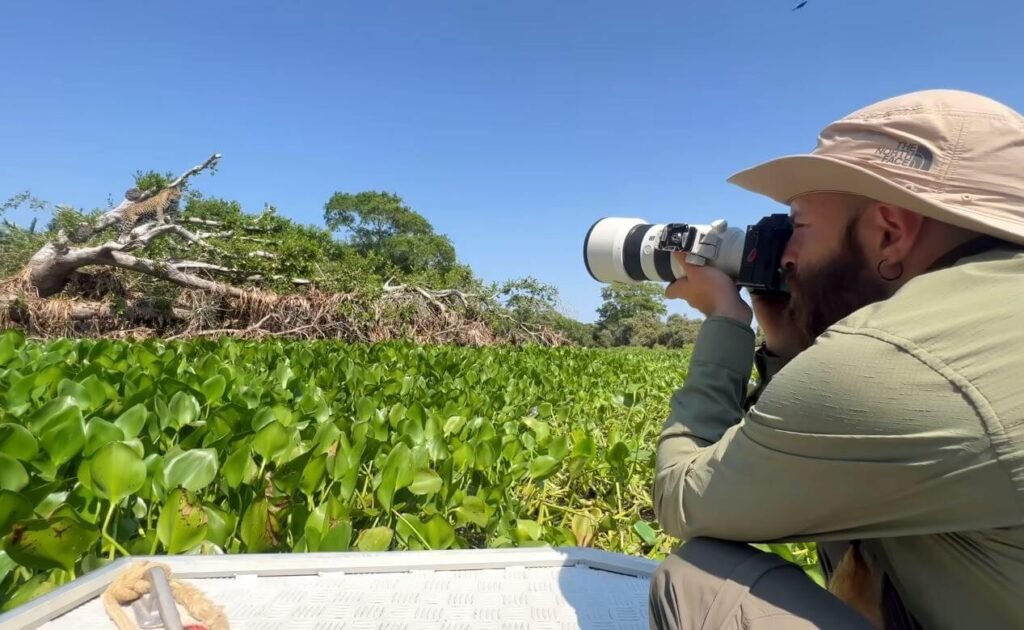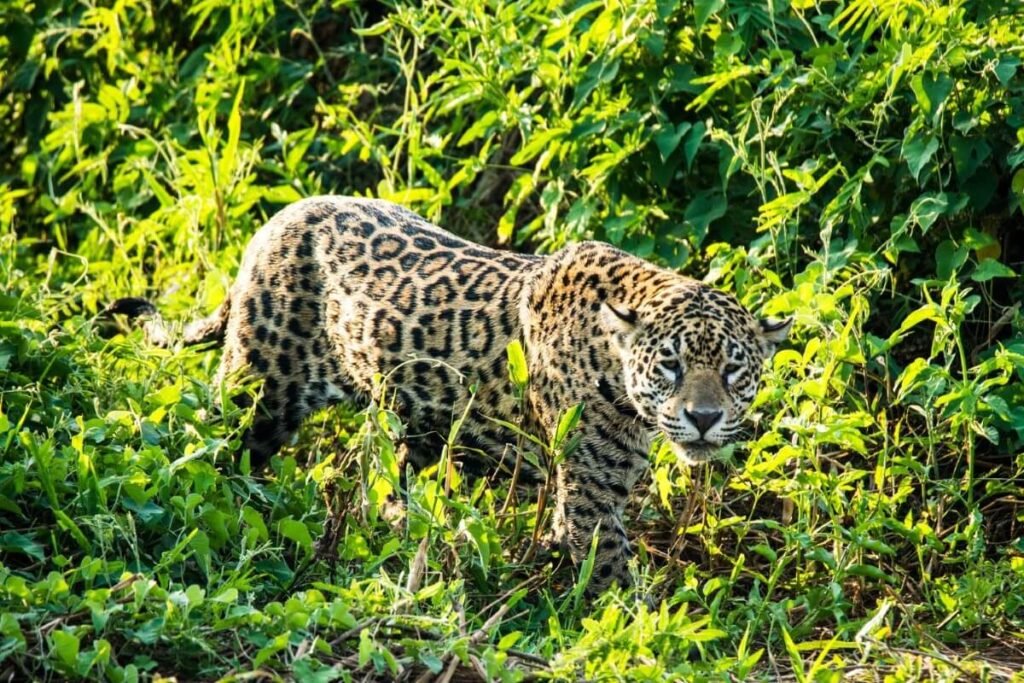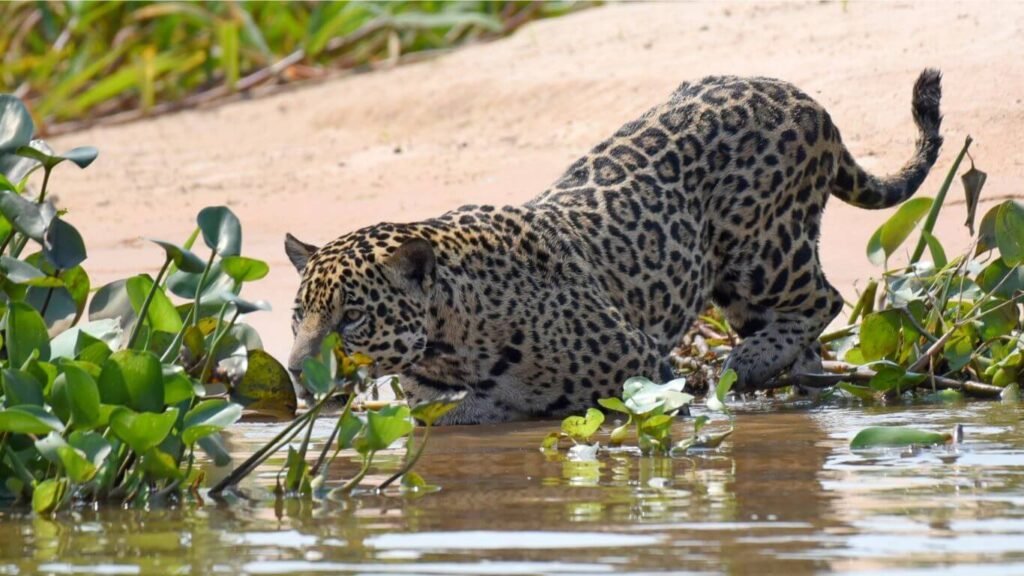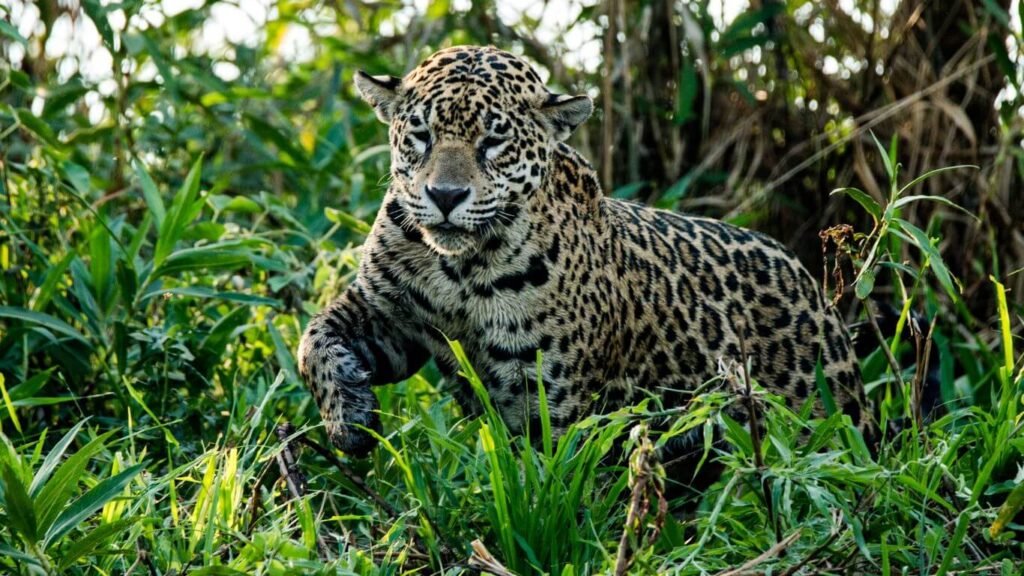The jaguar, the largest feline in the Americas and one of the most majestic on the planet, finds some of its most iconic habitats in South America. With vast jungles, powerful rivers, and astonishing biodiversity, this continent offers several national parks where it’s still possible to spot these incredible predators in their natural environment. In this guide, you’ll discover the main National Parks in South America where you can see jaguars, along with tips for a safe and respectful experience.
Why see jaguars in the wild?
Observing a jaguar in its natural habitat is an experience that deeply connects you with nature. These felines play a crucial role in ecosystem balance, and their presence indicates the health of a forest. Additionally, their beauty and agility are simply captivating.
Top Destinations to Spot Jaguars in South America

1. Pantanal National Park – Brazil
The Pantanal, one of the most important National Parks in South America to see jaguars, hosts one of the highest concentrations of jaguars on the planet. In the dry season, this park is the ideal destination to observe these majestic felines in the wild.
- Location: Mato Grosso and Mato Grosso do Sul, Brazil
- Best time to spot jaguars: June to October
- Recommended experience: Boat tours along the Cuiabá River
Tip: Hire local guides and choose agencies that promote responsible tourism to preserve this fragile ecosystem.
2. Yasuní National Park – Ecuador
Yasuní National Park, in Ecuador, is one of the most biodiverse National Parks in South America and home to a significant jaguar population. Although the dense forest makes sightings challenging, it offers a unique experience in the Amazon jungle.
- Location: Amazon region, Ecuador
- Best time to spot jaguars: Year-round, though the dry season (December to February) facilitates travel.
- Recommended experience: Wildlife tours with local indigenous guides who know the best spots to see animals.
Tip: Bring binoculars and a telephoto camera, as jaguars in this area are more elusive.
3. Madidi National Park – Bolivia
Among National Parks in South America, Madidi National Park is one of the most remote and rich in biodiversity. Here, you can have the chance to see jaguars in the wild and observe various local wildlife species.
- Location: La Paz Department, Bolivia
- Best time to spot jaguars: May to October, during the dry season
- Recommended experience: Wildlife camps with operators involved in conservation projects.
Tip: Madidi is a remote place, ideal for adventurers. Prepare for total immersion in nature and a truly ecological experience.
4. Manu National Park – Peru
Manu National Park is another prominent National Park in South America for spotting jaguars. This Amazonian park offers the chance to see jaguars and other animals in their natural environment, especially in the areas along the Manu River.
- Location: Amazon region, Peru
- Best time to spot jaguars: June to November
- Recommended experience: Canoe tours along the Manu River
Tip: Bring insect repellent and comfortable clothing, as the weather is hot and humid.
5. Iguazú National Park – Argentina
Famous for its waterfalls, Iguazú National Park is also one of the National Parks in South America where jaguars can be spotted in the Atlantic forest. Significant conservation efforts are underway here to protect these felines.
- Location: Misiones, Argentina
- Best time to spot jaguars: October to March
- Recommended experience: Guided hikes on Atlantic forest trails
Tip: Although jaguar sightings are difficult, you can support conservation efforts by visiting the park and learning about the preservation initiatives in the region.
6. Sierra de La Macarena National Park – Colombia
Sierra de La Macarena is one of the lesser-known National Parks in South America for seeing jaguars, but it offers a unique experience with landscapes of savannas and tropical forests, home to this species in Colombia.
- Location: Meta, Colombia
- Best time to spot jaguars: June to December
- Recommended experience: Guided hikes in less-traveled areas of the park
Tip: Visit with local guides who promote ecological tourism practices and respect conservation areas.
7. Noel Kempff Mercado National Park – Bolivia
Noel Kempff Mercado National Park is one of the most secluded and well-preserved National Parks in South America, offering an ideal habitat for jaguars in Bolivia. Its remote access makes it a perfect adventure for wildlife watchers.
- Location: Santa Cruz, Bolivia
- Best time to spot jaguars: May to September
- Recommended experience: Multi-day tours with certified operators
Tip: Noel Kempff is a remote area, accessible only by plane or long overland journeys; ideal for those seeking an extreme adventure.
Tips for Safely and Responsibly Spotting Jaguars

Observing a jaguar in its natural habitat is an awe-inspiring experience, but it requires caution and respect. Here are some key tips:
- Hire specialized guides: Local guides know the best spots for sightings and help ensure safety.
- Keep your distance: Watching jaguars from afar minimizes risk and prevents the animal from feeling threatened.
- Be patient and quiet: Jaguars are elusive; staying silent increases the chances of seeing them without disturbing them.
- Respect the habitat: Do not leave trash, avoid disturbing wildlife, and stick to marked trails to protect the ecosystem.
- Support sustainable tourism: Choose operators who work with conservation initiatives so that your visit contributes to species preservation.
South America is home to some of the world’s most exceptional habitats, where jaguars find refuge and space to thrive. Exploring these national parks not only allows a unique connection with nature but also supports the conservation of these felines and their ecosystems.
If you wish to see jaguars in their natural habitat, plan your trip in advance, follow safety recommendations, and contribute to the protection of one of the continent’s most iconic felines.
Frequently Asked Questions

1. What is the best way to find a jaguar?
The best way to find a jaguar is to hire the services of an experienced local guide. These guides know the habits of jaguars and the best spots to find them.
2. Is it possible to see jaguars in captivity?
Yes, it’s possible to see jaguars in zoos and wildlife sanctuaries. However, observing a jaguar in its natural habitat is an incomparable experience.
3. What should I do if I see a jaguar in the wild?
Stay calm: Jaguars usually avoid contact with humans.
Don’t approach: Keep a safe distance.
Inform your guide: They will advise you on how to proceed.
4. What threats do jaguars face?
Jaguars face several threats, including habitat loss due to deforestation, poaching, human conflict, and climate change.
5. Can I touch a jaguar?
No, you should not touch a jaguar. These animals are wild and can be dangerous.
6. How much does a jaguar-watching trip cost?
The cost of a jaguar-watching trip varies depending on the destination, trip duration, and included services.
7. Can jaguars be seen in all South American countries?
No, jaguars are mainly found in tropical areas of South America. Some countries where you can find them include Brazil, Bolivia, Argentina, Paraguay, Colombia, Ecuador, and Peru.
8. Are jaguars nocturnal animals?
They are primarily crepuscular and nocturnal animals, but they can also be active during the day.
9. Are jaguars important for the ecosystem?
Yes, jaguars are apex predators and play a key role in maintaining ecosystem balance. They help keep other species’ populations healthy and contribute to seed dispersal.
10. Can I adopt a jaguar?
No, you cannot adopt a jaguar. These animals belong to the wild and should be protected in their natural habitat.
11. What should I do if I see an injured jaguar?
If you see an injured jaguar, do not attempt to approach or help it on your own. Immediately inform local authorities or a conservation organization.
12. Can jaguars climb trees?
Yes, jaguars are excellent climbers and often use trees to rest, hide, and stalk their prey.
Jaguar safari spots in the Amazon are limited! If you wish to experience the thrill of spotting these majestic cats in their natural habitat, reserve your place with Lorenzo Expeditions. Take advantage of this unique opportunity and be part of an unforgettable experience. Contact us now at https://www.lorenzoexpeditions.com/ for more information.





